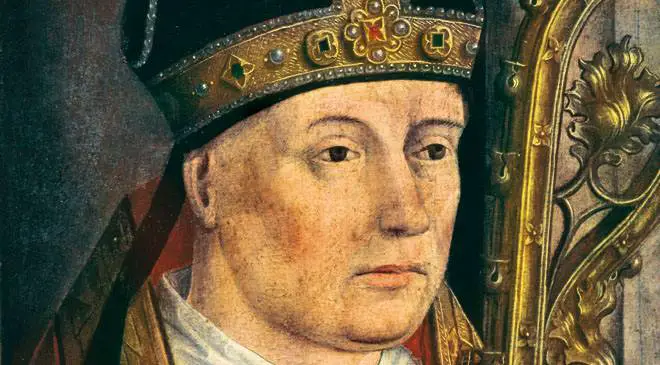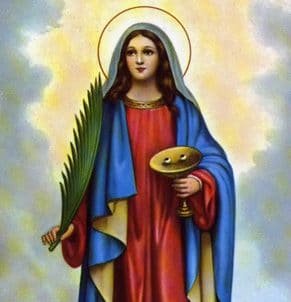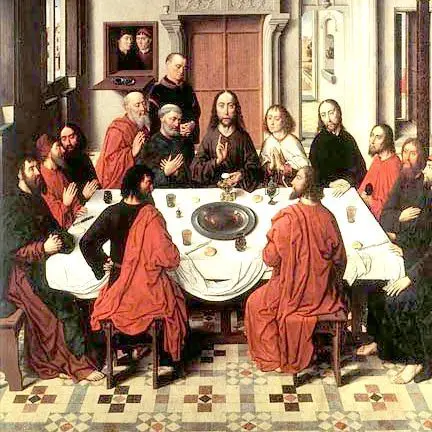Some people need something or someone to believe in to give them the strength to carry on through the trials and tribulations of life, something to rely on when threats arise in the course of the days, so today we are going to write about how to get started in Santeria.
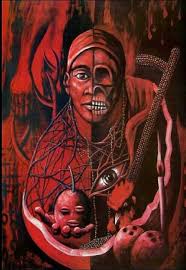
How to get started in Santeria
It has been commented how or which is the correct way to be initiated in the Yoruba religion, many say that the Orishas call their children, here we start with innumerable theories… “Receiving the necklaces, the delivery of the warriors, with a base of Eggun who serve as guides to guide you through the process before the initiation. Santeros are people who know their craft very well.
The origin of Santeria.
Experts have written that Santeria comes from African migrants, formed by the reconciliation of different doctrines between Christian religions and Yoruba beliefs. It is widespread in the Caribbean, Venezuela, Brazil, Panama and other American countries.
In Europe, especially in Spain, it has reached its apogee because Africa borders Spain and so they began to emigrate to that country.
The Regla de Osha or how to get started in Santeria.
To get started in Santeria, the first thing to do is to make the head saint, then the initiation process begins.
Beginners in Santeria acquire the name Inawó; to obtain this first step in the world of Santeria, it is necessary to fulfil some initiation rituals. These are the details to follow and stay in Santeria:
- We can find in Santeria some idols called Orishas or Saints; with this name they receive the direct expressions of Oóórun, called “God” in the Yoruba religion, because he is the material expression of the whole universe and of all that exists.
- The outstanding Orishas are: Elegua, Ogun, Shango, Oya, Yemaya, Oshun, Orula, Obatala and there are others who form part of the so-called Yoruba pantheon.
- Santeros are believed to be the children of some Orishas. This is called the “Santo de Cabeza”.
- It is said that there is a phrase in Santeria that says: The Orishas choose their children and not the children choose the Orisha, so the first step is to know which saint they belong to in order to be crowned (see: San Martin Caballero article).
- You can only find out which head saint you belong to with the help of a santero and this is done by reading conch shells.
- To find out which one you are, you have to start with Santeria, because there you have to understand that people have some characteristics of the orisha to which they belong, according to Oya’s children are explosive, Shango’s are dancers and polygamists, Elegua’s are jokers and funny, Obatala’s children are malicious, bad people and Yemaya’s are vain and fascinated by beauty.
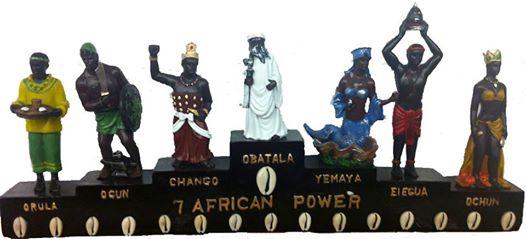
The acceptance of Santería, an act of faith and learning.
It is called “Asiento”, the ritual of entry into Santería, it is the pact between the individual and the Chief Saint; it requires a period of learning in which the beginner or Inawó learns how to start in Santería; this is a one-year process, during which the beginner must wear the necklaces that identify him/her with his/her Orisha.
The following are the necklaces that the beginner or Inawó must wear:
- Changó: Six small white beads alternating with six red ones.
- Eleguá: Three red beads alternating with three black.
- Obatalá: The beads must be white.
- Yemayá: Seven white beads alternating with seven blue.
- Oshún: The only one of a single colour, as all the beads must be white.
- Oyá: Nine white beads alternating with nine black.
During this time the novice or Inawó must dress in white, meaning that the individual must be purified by this white colour in order to be accepted by the Chief Saint.
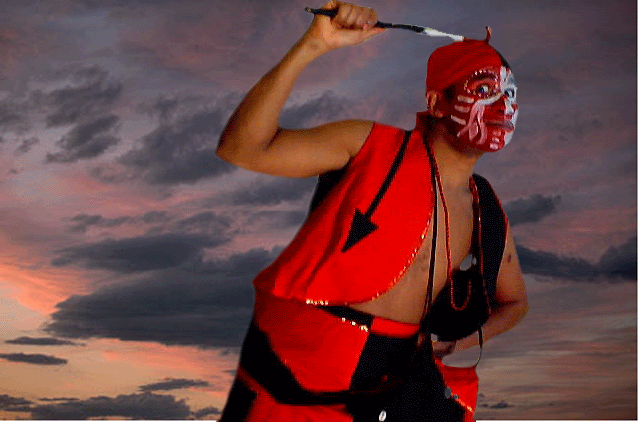
What is the ritual of the “asiento”?
The rite of the “asiento” lasts about seven days; then comes the apprenticeship or purification, which lasts exactly one year; in fact, for the “asiento”, the beginner or inawó must confine himself to the house of his Santería godfather, that is, the one who initiated him in the ritual to unite him with the head saint; during this period, animals are sacrificed, meditations, purifications and dances in honour of the Orishas (see: article San Elías).
For the initiation with the “Yaguó”, the person who starts in Santeria has to make some invocations and bathe with some concoctions that contain water and plant juices (this concoction is called Osaín de asiento).
After the bath, the guests cut pieces of hair from the Yaguó’s head and make wishes. When the hair is shaved off, circles of different colours are drawn on the skull.
When the head of the “yaguó” is ready to receive the “santo de cabeza”, the coronation or arrival of the orisha takes place. Then comes the period of one year during which the Yaguó must always dress in white to become an Inawó and must not visit places such as cemeteries and prisons.
It is more than a cult, Santeria is a culture, a way of being and accepting its essence, the Orishas are powerful and wise, those who believe in them accept their essence and believe they are stronger, purer and blessed.
How to get started with Yuruba.
According to experts, it has its roots in Africa, where it was introduced by slaves as a moral and spiritual support to prevent them from being overwhelmed by pain and sadness in the face of the injustice, outrage and disgrace to which they were subjected by their autocrats.
As a proof of the devotion that this religion has aroused through the strength of its spirituality, we can appreciate that it has integrated people from different cultural backgrounds, despite the eminently African events.
In spite of their torn origins, they arrived on this continent by force and involuntarily, and were subjected to repressive processes designed to make them forget their traditions, and above all their religion, and adapt themselves to the customs of the slave owners, the most important of which was Christianity.
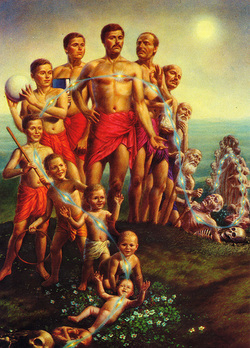
The African slaves lived in the house of the owner (master), without the honour of a human being; they were treated as beasts of burden and made to work hard, without any privileges.
Gradually, the slaves regrouped and found the strength to save their spirituality, in spite of the diversity of the tribes living in the same territory (see: article in the Book of St. Cyprian).
When they organised spiritual meetings, with the aim of restructuring their culture, they called themselves “the friends” who withdrew into the bush, as they were called by the masters: “Lucumí”.
They managed to preserve their spiritual and religious tradition by means of an ingenious and creative mechanism that also required a great deal of study and analysis: syncretism.
During the colonial period, the slaves were forbidden to practise their religion, which led them to hide it behind the names of Christian saints, thinking of the similarity between them and some of the gods of the Yoruba pantheon.
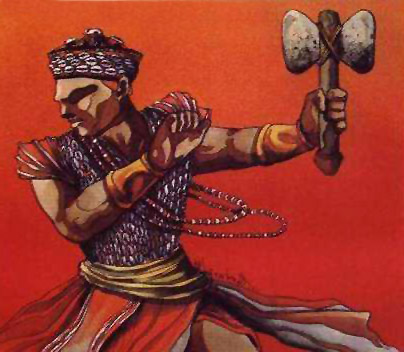
They also tended to invent legends to justify to Christians the veneration of this particular saint on this particular date. For example, 29 June is one of the days dedicated to Oggún, who was syncretised with Saint Peter, among others. In Venezuela, in the town of Guarenas and Guatire, a parranda (festival) is held on this day to “pay” an alleged promise to Saint Peter, who “healed” the daughter of a slave on this day. It is interesting to note that the black slaves of the New World, wherever they were, worshipped St Peter on the same day.
Therefore, syncretism was not just a process of randomly assigning Christian names to African deities, but each syncretisation was done according to the similarities between the peculiarities of the Christian saints and the history and peculiarities of the African Orishas. The development of studies, analyses and syntheses began with the attempt to [homogenise] or harmonise religious versions coming from different tribes and religions.
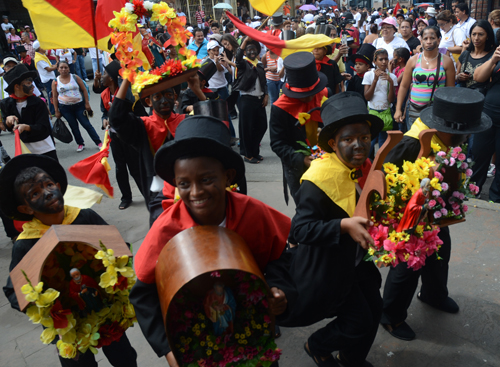
Rules of the Yoruba religion.
The Osha-Ifá Statutes for Santeros, the Divinatory Sayings of the Letters of the Dilogún and the Odun of Ifá, the Code of Ethics of the Odun of Ifá and the Moral Regulations of the Odun of Ifá Ika Fun are linked to the tradition consolidated by the wisdom and experience of the religious practice of the Oloshas, Babaloshas, Iyaloshas, Oluwo Osain, Obases or Oriates, Babalawos and Olúos. These codes have been preserved and developed in Cuba on the basis of the best values of the African cultural heritage.
The Divinatory Proverbs of the Letters of the Dilogun and the Odun of Ifa, the Code of Ethics of the Odun of Ifa and the Moral Regulations of the Odun of Ifa Ika Fun, are a set of ideas and principles of action related to the individual and to Osha-Ifa as a religious system.
These groups of ideas and principles function as moral rules that regulate the behaviour and relationships of the human being who finds in this belief a way to solve the problems of his life and to achieve his own goals in human existence in full connection with the environment.
The Osha-Ifa Statutes for Santeros, the Divinatory Proverbs of the Letters of the Dilogun and the Odun of Ifa, the Code of Ethics of the Odun of Ifa and the Moral Regulations of the Odun of Ifa Ika Fun create in the individual a predisposition to achieve, through the study and interpretation of the myths, legends and stories of Osha-Ifa in intervention with real life, the reasoning and reflection aimed at explaining the existence of man on this earthly plane and his behaviour.
The Osha-Ifa Statutes for Santeros are a system of guidelines to be learnt by all initiates in Osha and Ifa. These guidelines and the Yoko Osha Ita help the individual to achieve the harmony and balance for which he/she was initiated into Osha-Ifa, and are of great importance to reach a higher spiritual level, to develop discipline, to achieve appropriate habits in his/her behaviour and to learn how to govern in his/her own way.
The fulfilment of the Osha-Ifá Statutes for Santeros and Ita is an essential basis to understand the fundamental principles of Osha-Ifá, and with the exercise of these rules the Babloshas, Yaloshas, Iyawo, Oloshas, have reached to enjoy the prestige of their behaviour in the society.
To be initiated into Osha-Ifa is a great challenge for the individual, it forces him to make sacrifices, to purify and strengthen his character, for which these rules are an invaluable instrument.


